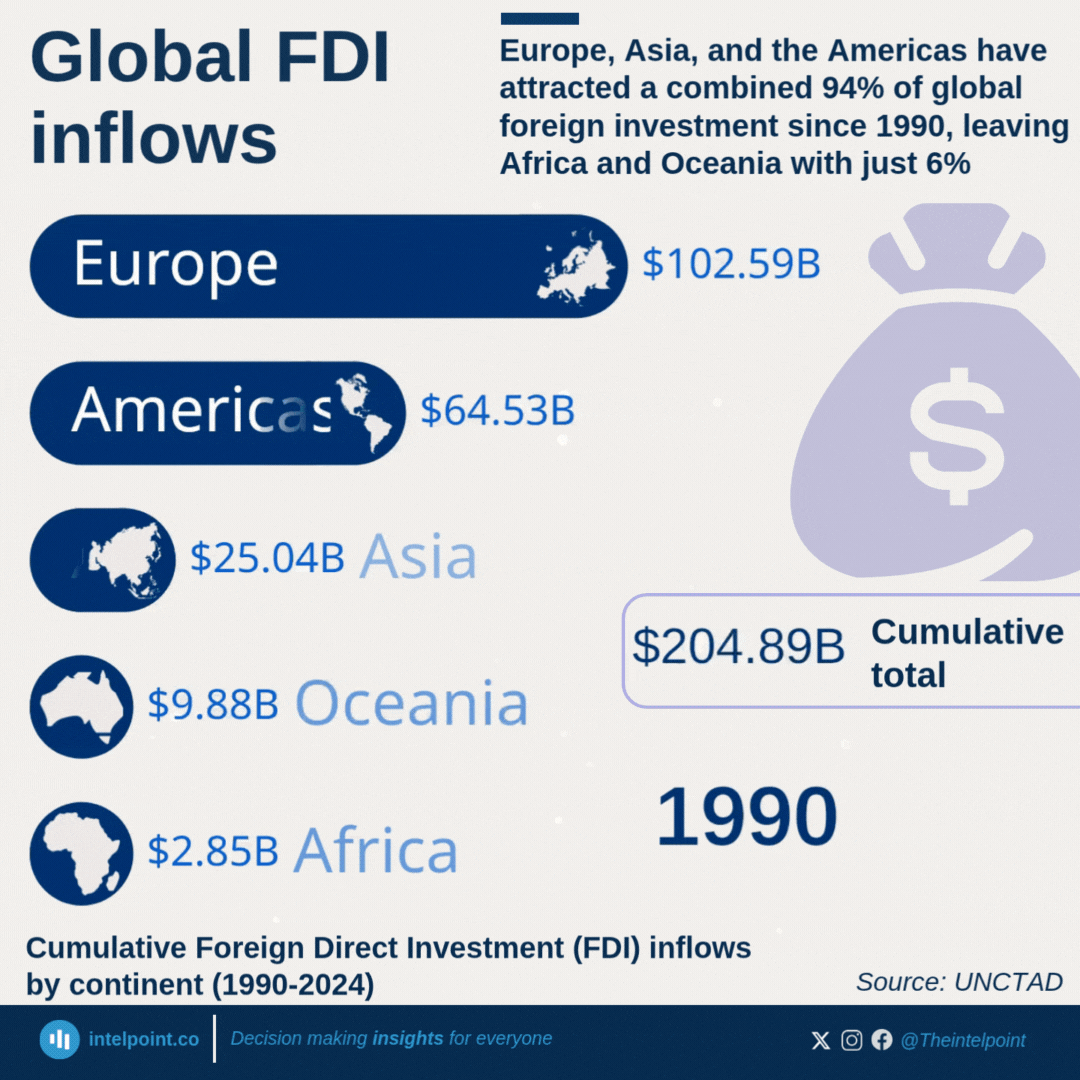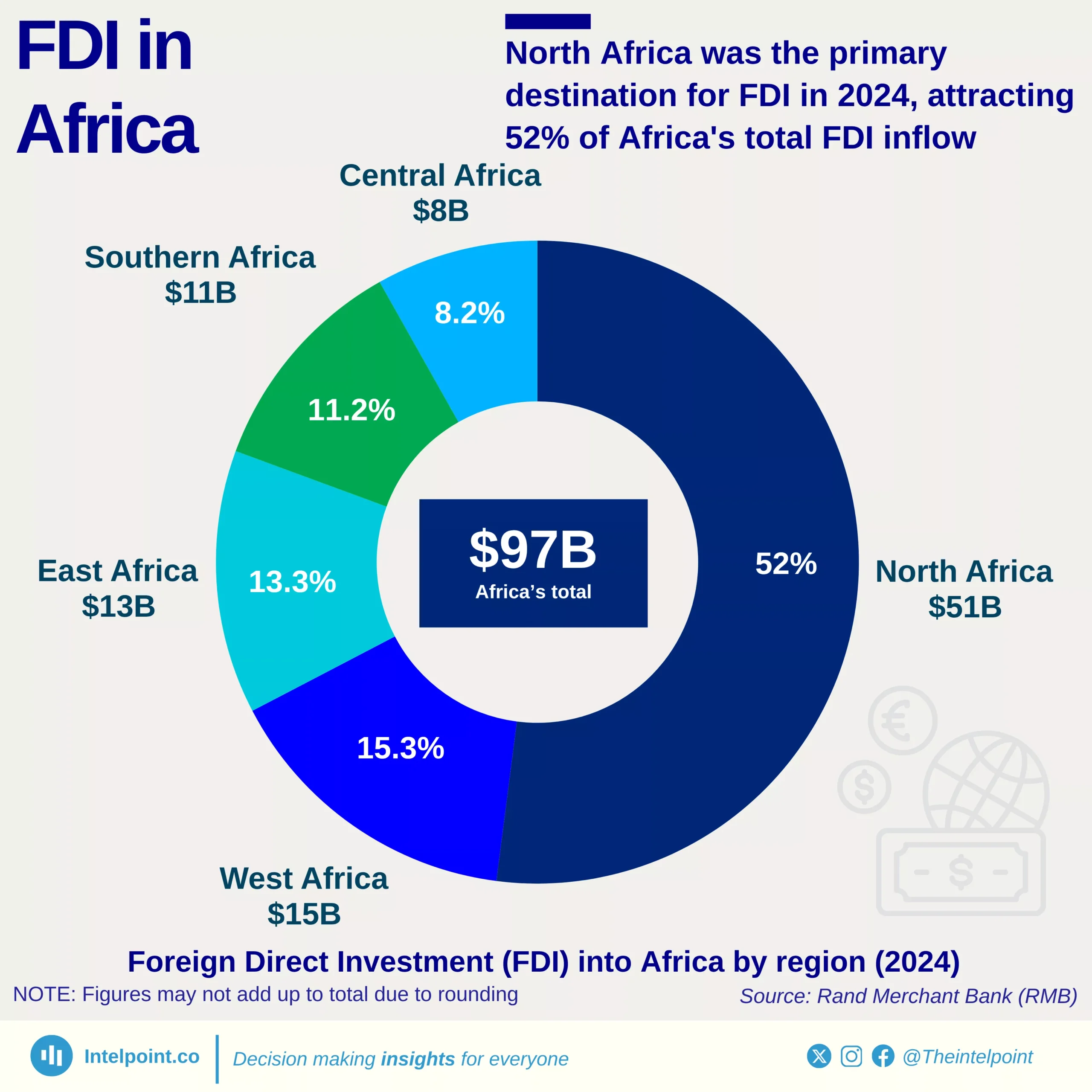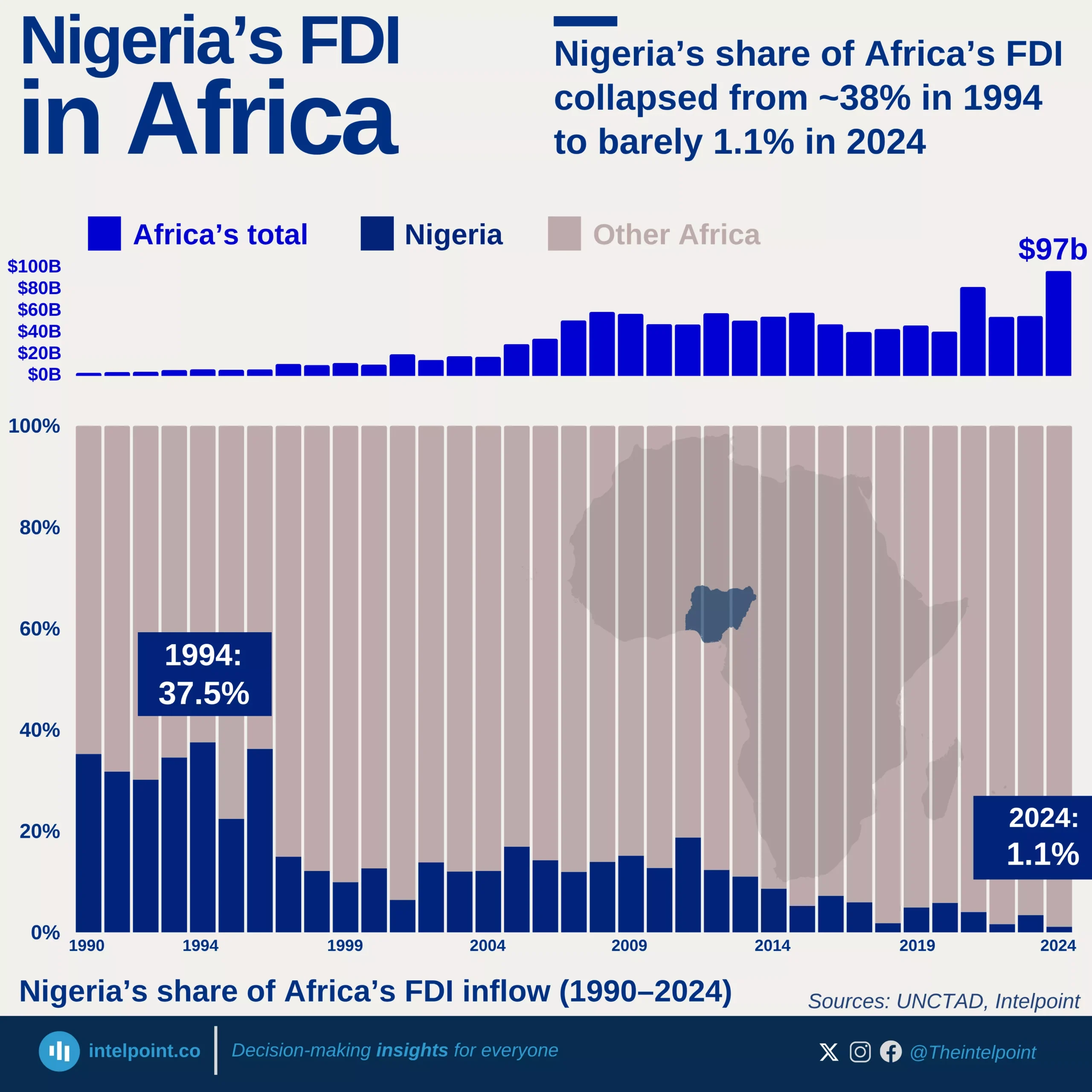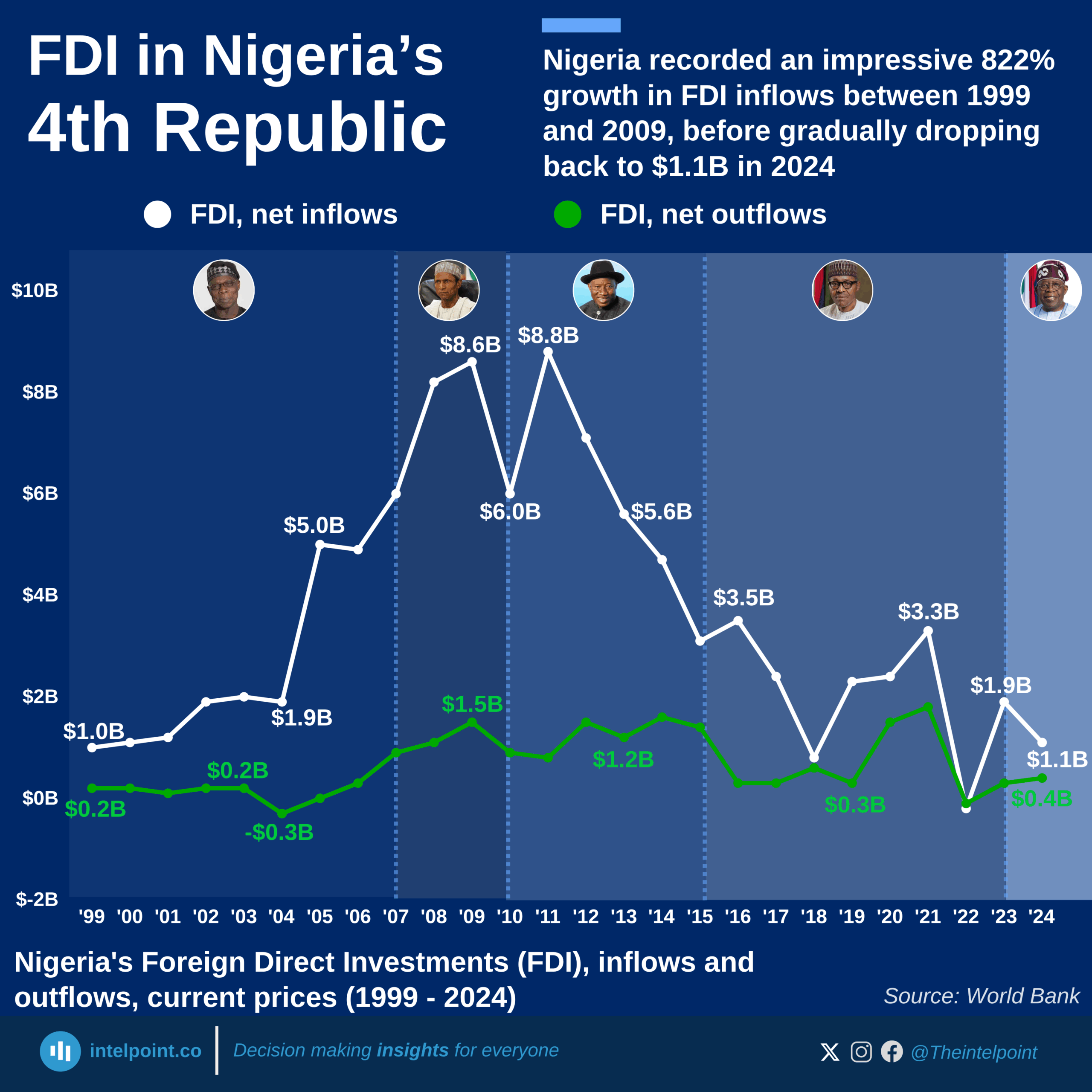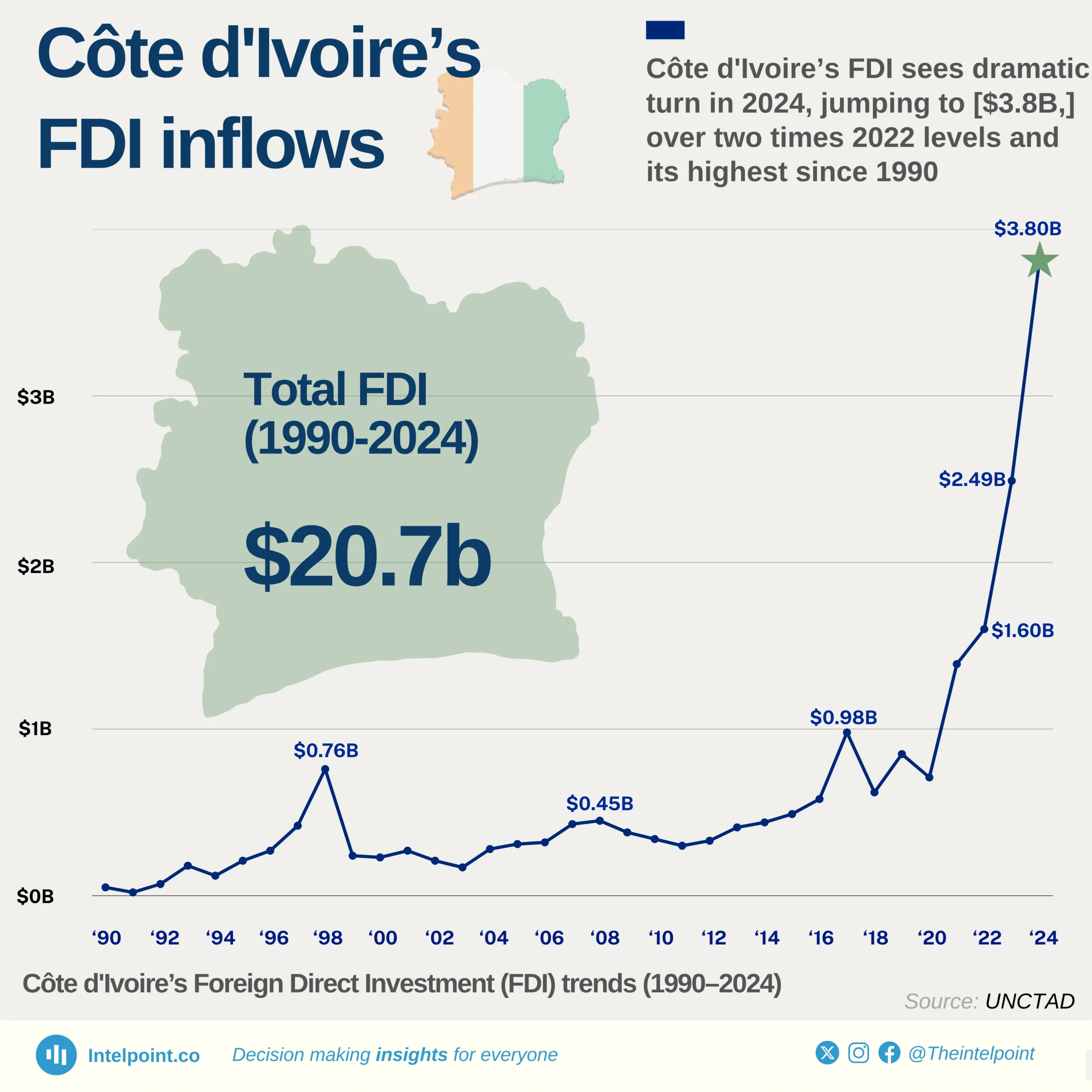From modest beginnings in the early 1990s, Zambia’s foreign direct investment (FDI) journey has evolved through significant highs and lows. With inflows hovering below $0.5 billion for more than a decade, the country's FDI trajectory only began to shift in the mid-2000s. The year 2007 marked a major breakthrough with $1.32 billion in inflows, Zambia’s first billion-dollar year. This momentum continued into the 2010s, peaking at $2.10 billion in 2013, reflecting strong investor interest likely tied to mining and infrastructure sectors.
However, the country’s FDI environment has been volatile. A sharp plunge in 2022 saw inflows fall to a negative figure, the lowest in the data set, signalling divestment or disinvestment. Encouragingly, Zambia staged a comeback in 2024 with a $1.24 billion inflow, suggesting renewed investor confidence. In total, Zambia has attracted about $22.64 billion in FDI between 1990 and 2024, illustrating a long-term but uneven growth in foreign investment.
